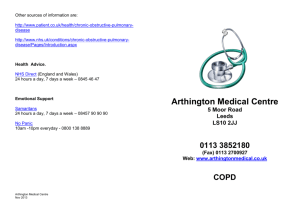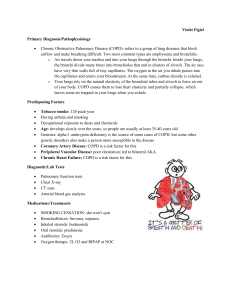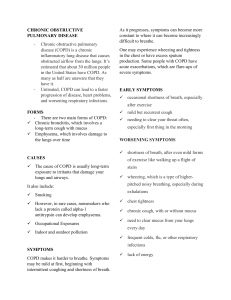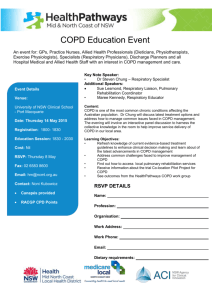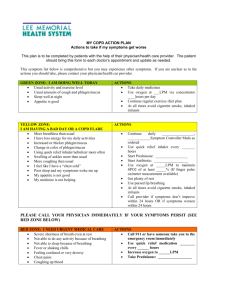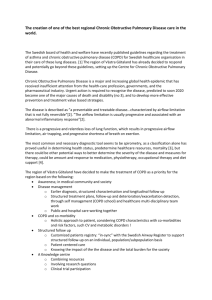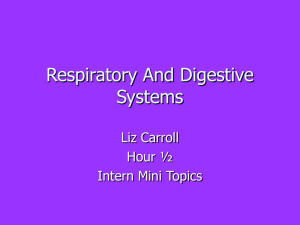COPD - Davidson County Health Department
advertisement
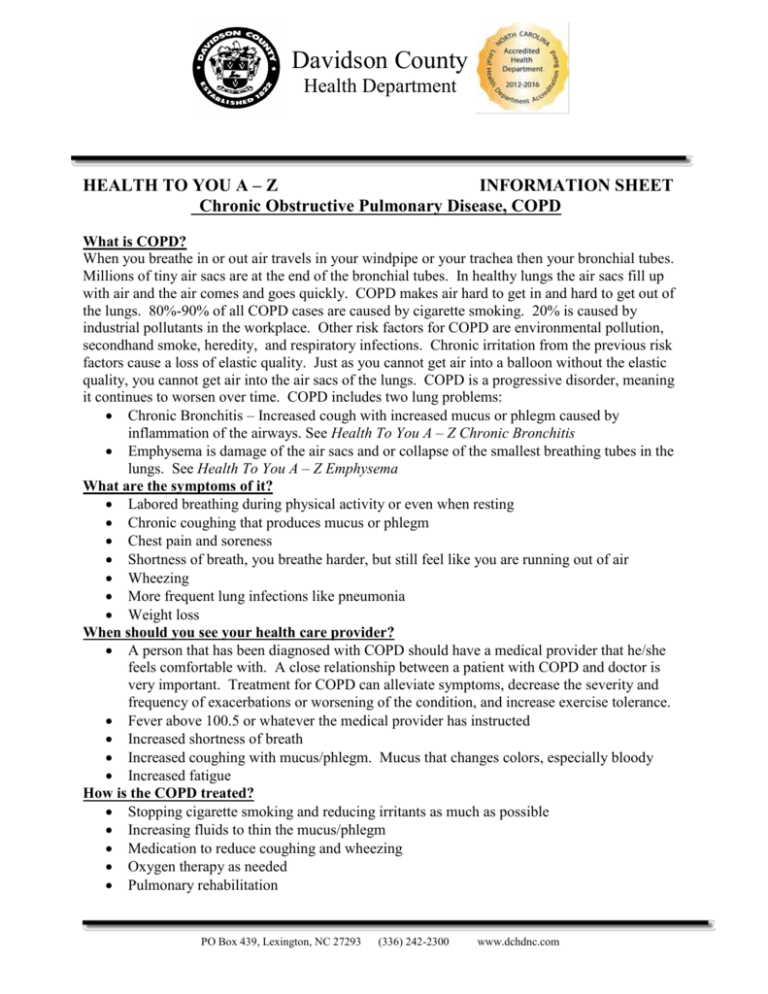
Davidson County Health Department HEALTH TO YOU A – Z INFORMATION SHEET Chronic Obstructive Pulmonary Disease, COPD What is COPD? When you breathe in or out air travels in your windpipe or your trachea then your bronchial tubes. Millions of tiny air sacs are at the end of the bronchial tubes. In healthy lungs the air sacs fill up with air and the air comes and goes quickly. COPD makes air hard to get in and hard to get out of the lungs. 80%-90% of all COPD cases are caused by cigarette smoking. 20% is caused by industrial pollutants in the workplace. Other risk factors for COPD are environmental pollution, secondhand smoke, heredity, and respiratory infections. Chronic irritation from the previous risk factors cause a loss of elastic quality. Just as you cannot get air into a balloon without the elastic quality, you cannot get air into the air sacs of the lungs. COPD is a progressive disorder, meaning it continues to worsen over time. COPD includes two lung problems: Chronic Bronchitis – Increased cough with increased mucus or phlegm caused by inflammation of the airways. See Health To You A – Z Chronic Bronchitis Emphysema is damage of the air sacs and or collapse of the smallest breathing tubes in the lungs. See Health To You A – Z Emphysema What are the symptoms of it? Labored breathing during physical activity or even when resting Chronic coughing that produces mucus or phlegm Chest pain and soreness Shortness of breath, you breathe harder, but still feel like you are running out of air Wheezing More frequent lung infections like pneumonia Weight loss When should you see your health care provider? A person that has been diagnosed with COPD should have a medical provider that he/she feels comfortable with. A close relationship between a patient with COPD and doctor is very important. Treatment for COPD can alleviate symptoms, decrease the severity and frequency of exacerbations or worsening of the condition, and increase exercise tolerance. Fever above 100.5 or whatever the medical provider has instructed Increased shortness of breath Increased coughing with mucus/phlegm. Mucus that changes colors, especially bloody Increased fatigue How is the COPD treated? Stopping cigarette smoking and reducing irritants as much as possible Increasing fluids to thin the mucus/phlegm Medication to reduce coughing and wheezing Oxygen therapy as needed Pulmonary rehabilitation PO Box 439, Lexington, NC 27293 (336) 242-2300 www.dchdnc.com


